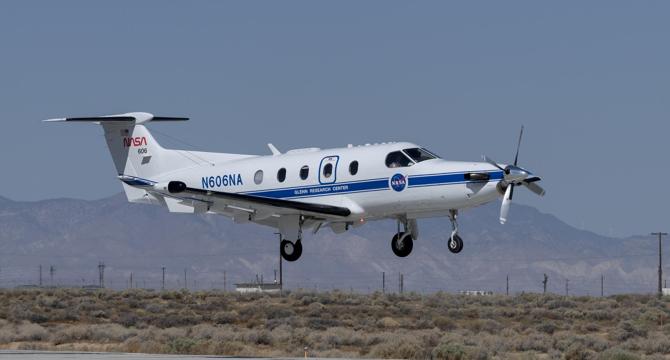Nasa
13h
184

Image Credit: Nasa
NASA Tests Air Traffic Surveillance Technology Using Its Pilatus PC-12 Aircraft
- NASA is evaluating an Automatic Dependent Surveillance-Broadcast (ADS-B) system’s ability to prevent collisions in a simulated urban environment.
- Using its Pilatus PC-12 aircraft, researchers are investigating how ADS-B systems could handle the demands of air taxis flying at low altitudes through cities.
- The challenge for ADS-B systems is consistent signal coverage in urban areas, which can be interrupted by distance or interference and potentially cause collisions.
- Researchers established a test zone at NASA’s Armstrong Flight Research Center in Edwards, California, on Sep 23 and 24, 2024, and flew in a grid pattern over four ADS-B stations to collect data on signal coverage, which will inform future placement of additional ground stations.
- Brad Snelling, Vehicle Test Team Chief Engineer for NASA’s Air Mobility Pathfinders project said, “We can use the test results to help us configure the equipment to reduce signal loss when we conduct future air taxi flight tests.
- NASA's research in ADS-B signals will help revolutionize U.S. air transportation.
- NASA pilots and crew from Armstrong and Glenn Research Centers undertook a series of familiarization flights, including several approaches and landings, to prepare for ADS-B test flights.
- In June, researchers flew the Pilatus PC-12 and found a consistent ADS-B signal between the aircraft and communication antennas mounted on the roof of the center’s Aerospace Communications Facility.
- NASA will use the results of this research to design infrastructure to support future air taxi communication, navigation, and surveillance research and to develop new ADS-B-like concepts for uncrewed aircraft systems.
- NASA’s research in ADS-B signals and other communication, navigation, and surveillance systems and the results of this research will help to design infrastructure to support future air taxi communication, navigation, and surveillance research.
Read Full Article
11 Likes
For uninterrupted reading, download the app